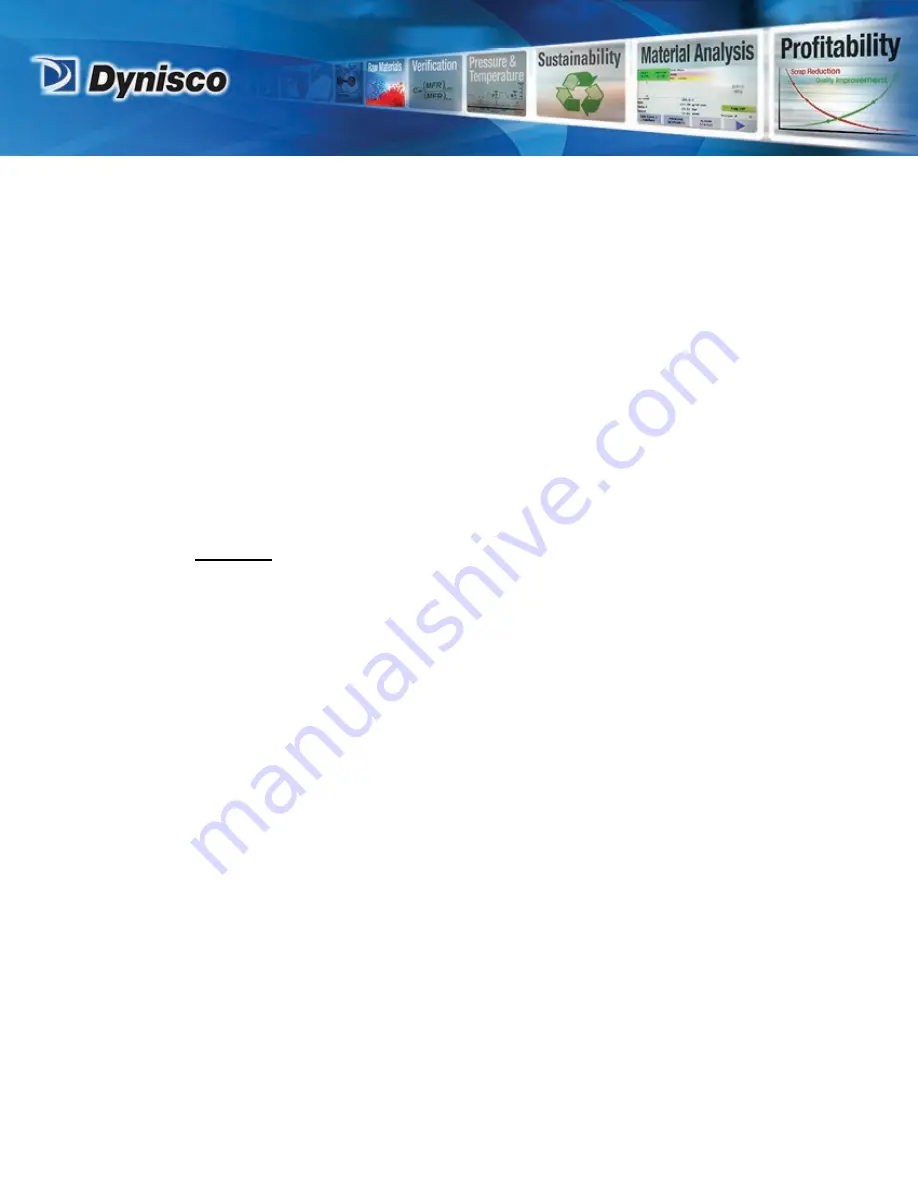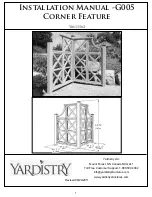
LCR7000 & RHEOSIGHTS P/N: 974194 |
Rev: A
|
ECO: 52468
www.dynisco.com
From lab to production,
providing a window into the process
-22-
that is necessary to remove material tenaciously stuck in the threads. Similarly, the die
holder nut is screwed into a thread-cutting die. This will clear the threads of excess
material. The inside of the die nut can also be clogged with material. For short dies running
Nylon, this is common. Included with your spare parts kit a 12.7 mm (1/2) diameter rat
tail (tapered) round file, run up and down the inside of the die holder nut does an excellent
job. Placing the hot die nut onto a rat-tail and then brushing the outer threads with a stiff
wire brush, is also an excellent cleaning method.
Oven cleaner (Easy-Off
) sprayed onto parts and left overnight will do an excellent job of
cleaning degraded material off the piston shaft, the outside of the die and on the die holder
nut.
Caution: Be careful not to breathe in oven cleaner vapors.
If running at high temperatures (<300 oC) you may wish to coat the outside of the die and
Pressure Transducer with anti-seize material prior to placing it in the die holder nut. This
will make it much easier to clean should any material get into that area during the test and
cross-link. Be careful not to get anti-seize material onto the top of the die or in the barrel,
as this will drastically affect your results. Some customers have used a brass wire flywheel
to clean piston tips between runs at high temperatures. Should you also choose this route,
be sure to check the plunger tip diameters often for excessive wear. (Tips less than 9.515
mm would be out of ASTM specifications for DYNISCO POLYMER TEST rheometers).
Material leakage past the tip should also be less than 0.1 g.
















































